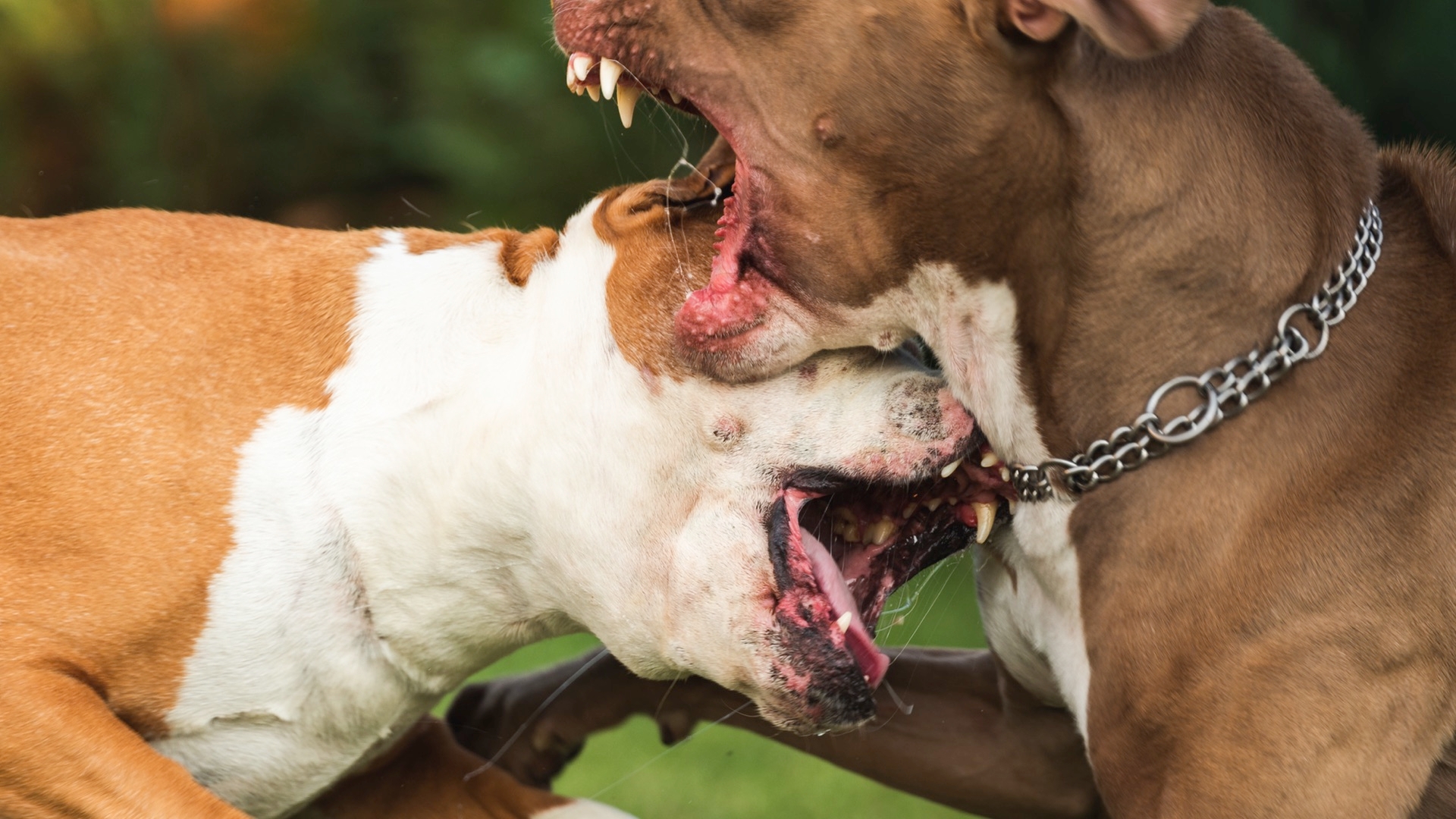Aggression And Dominance In Dog Training:
Summary:
Actions such as "alpha rolls" and "scruff shakes" have no basis when studying wolf or dog behavior. They only lead to creating unnecessary fear on our dog's part toward us, fear that ultimately can lead to aggression because the frightened dog knows of no other way to protect itself other than using its teeth.
Aggression is Not the Answer
Actions such as "alpha rolls" and "scruff shakes" have no basis when studying wolf or dog behavior. They only lead to creating unnecessary fear on our dog's part toward us, fear that ultimately can lead to aggression because the frightened dog knows of no other way to protect itself other than using its teeth. We all owe it to our dogs to see the world from their point of view to create a more harmonious relationship. Whether we are looking at a dog or a wolf, actions such as grabbing a dog and forcing it down, growling at the dog, and other aggressive behaviors directed toward the animal will only lead to the animal developing a "fight-or-flight" response where the animal fears for its life. In this situation, the dog will either freeze out of fear, flee far away from the threatening animal or person if an opportunity exists to get out or fight to save itself. When we engage in such behaviors toward our dogs, we are not telling the dog we are "boss"; instead, we are telling the dog we are dangerous creatures to be avoided or fought off. There is no "dominance" in these scenarios—only terror and the instinct to defend oneself against attack.
If Not Dominance, Then What Do We Use?
Fortunately, many trainers and behavior professionals now present concepts focusing on building a caring and happy relationship with your dog instead of relying on dominance. Some trainers refer to the term "leadership" or other similar terms that are less adversarial than "dominance" or "Alpha." What these trainers have in common is a desire to explain practical, non-confrontational, and humane ways of living successfully with dogs. These educated approaches aim to strengthen the bond between the owner and the dog and teach owners more effective ways of communicating with another species. For dogs with behavior problems, trainers employ programs such as "Nothing in Life is Free (NILIF)," which works along the principle that the dog must "do" something to earn what he wants (i.e., sit to get dinner, walk on a loose leash to move forward, etc.) These programs are effective because the dog is issued a structured set of rules that are consistently reinforced, and the dog learns what he needs to do to get the things he wants, such as food, petting, playtime, etc. Because dogs do not have the power of human speech and language, behavior problems and anxiety can result when they are left to fend for themselves in deciding how to live in our world without guidance that makes sense. Like with people, we behave better and thrive in a world that "makes sense" and has a clear structure.
The myths that resonate in "dominance theory," such as not allowing the dog to sleep on the bed, eat first, or go through doorways first, have no bearing on whether or not the dog will look to the owner for guidance. The specific rules of the relationship are up to the owner and are based on what they want in their household. Humane, educated trainers should strive to teach owners to positively and gently influence and motivate their dogs to act in a manner that befits their own home and tailor the "rules" to each individual. There is no scientifically validated data to uphold the belief that you must eat before your dog or keep them from sleeping on your bed or walking in front of you, and owners should not be led to believe this and live in a state of fear and anxiety over their dog's possible takeover of their home. In fact, most dogs and owners have excellent, mutually-rewarding relationships—even if the dog is allowed to sleep on the bed, eats alongside the owner, and does many other things erroneously labeled "dominance." To help illustrate some of the myths about dominance, we have prepared a related document, "Dominance Myths and Dog Training Realities."


